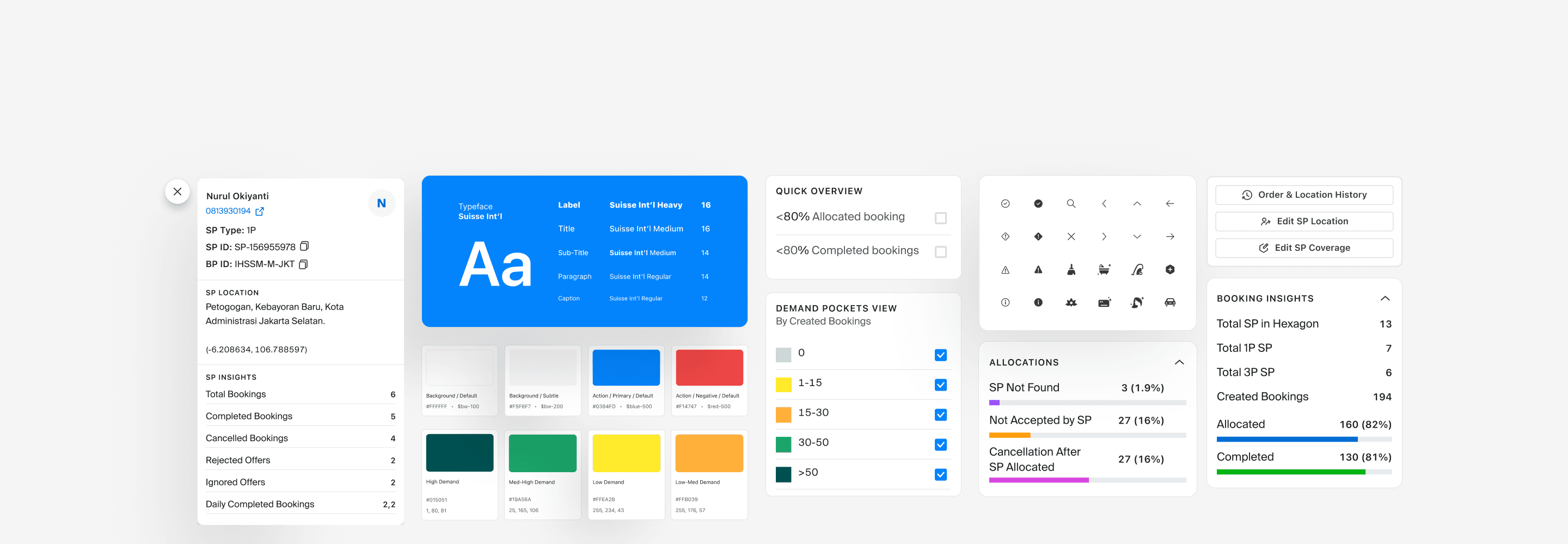

On Demand Service - Mobile App
Add Service Duration During Ongoing Order
Role
Product Designer
As the product designer, I took the entire ownership and responsibility of this project to run it from initial discovery state to the final concept, which includes collaborating with Product Researcher to research and Engineering Manager to define the feasibility of the product.
Feature Scope & Future Potential
Targeted Services: Massage & Home Cleaning
Allowing users to add the service duration during their ongoing orders is currently available for the top two most in-demand services: Massage and Home Cleaning. The flow works as a quotation system, which designed to be scalable, allowing future adoption across other services.
Background
Why We Built This Feature?
User Insight:
Users want to extend bookings during service but can't do it in-app
Business Concern:
Untracked, tip-based extensions → loss of revenue and accountability
Experience Gap:
Lack of official flow leads to complaints and insurance issues
Research
1. Concept Testing (Before Designing)
Focus: Explore and validate early ideas by understanding how users think the feature should work.
Methods: Conducted quick discussions with targeted users to gather initial reactions toward rough concepts and sketches (no prototype involved).
2. Usability Testing (After First Design Draft)
Focus: Evaluate the improved design’s clarity and ease of use after refining based on concept testing feedback.
Methods: Remote usability testing combining qualitative (user behavior and thought process) and quantitative (task completion, error rate) methods.
Design Proposal
First Iteration
We conducted both qualitative and quantitative usability testing, but the earliest input came from Concept Testing (CT), where a rough idea was tested with users to validate early direction.
What We Tried First
In the first iteration, the design was shaped closely around what users said they wanted in CT sessions:
“Just make it look like the original booking form, so it’s easier.”
Taking this at face value, we created a UI that mirrored the original booking flow then conducting the Usability Testing (UT).
What Went Wrong
- The similarity caused serious confusion during usability testing.
- Users didn’t notice they were using a new feature and/or misunderstood its purpose.
- We realized that ‘familiarity’ ≠ clarity in this context.
Entry Point
We assume when the order status is ‘Pelayanan sedang dilakukan’ and user wants to add the duration, their main focus will be on the On-going Order Tab or the order detail page, then we prepared the customer with 2 entry points to add the service duration:
- Active Order Page: additional CTA on ongoing order card.
- Order Detail Page: even if the customer selected the ongoing order card to see the order detail, they can still access the CTA.
Solution
Key Takeaway
What users say isn’t always what helps them. We needed to distinguish the new flow more clearly, even if that meant introducing visual and interactional differences.
Iteration Direction
- Added visual separation
- Clearer entry points (Landing Page, Active Order Card, Order Detail)
- Included validation and feedback layers to reduce ambiguity
- Designed forms that replicate familiar patterns with just enough difference to guide users effectively
Add service duration form
- Display the user's active order on the Add Service/Duration page to help them easily consider and choose the duration/service they want to add.
- Massage and Home Cleaning will have the same mechanism for only selecting the additional duration without the add-on.
- Every service will have its maximum service duration. Then we can show a shorter duration for customers to choose.
- The duration shown on the form is dynamic based on the SP’s schedule availability and its service maximum duration.
Adding USP
Finding from Usability Testing (UT):
Users weren’t aware they could add service duration. The existing “Service Information” section was overlooked, even though it contained key details (time estimates, equipment, do’s & don’ts).
Before:
- Service information buried in a single section
- Low visibility, often skipped by users
After:
- Dedicated section within the booking form
- Information split into clear categories
- Added banner space to highlight Unique Selling Points (USP), including “Add Duration” feature
- Detailed info available in pop-ups for better clarity
User Nudging via In-App Chat
- When the Service Provider (SP) arrives, the customer receives:
- A push notification
- An in-app chat message promoting the “Add Duration” feature
- Validation ensures this option is shown only if the SP has available time between the current order and their next booking.
- Applies to Massage and Home Cleaning services.
Outcome
Impact analysis
- With our organic effort where we haven’t pushed any marketing activity, the adoption of this feature is already reached the target with 5% of Total Completed Booking on Home Cleaning and Massage, with average ticket size to IDR 135k.
- The number is already a good starting point for us to explore enabling this feature on other SKUs: Add units on Cuci AC, add various furniture on Deep Cleaning, etc as the next action to do.
Learning
Concept Testing Helps Direction, But Still Needs Iteration
Our early concept testing helped define a clear direction and validated user needs at a high level. However, when translated into actual UI, some users found the layout too similar to existing menus—leading to confusion. This taught us that validating interaction is as important as validating ideas.
Familiarity Isn’t Always Clarity
Interfaces that look familiar can backfire if users expect different behaviors. Clear differentiation and intentional UI changes are necessary to set the right expectations.










